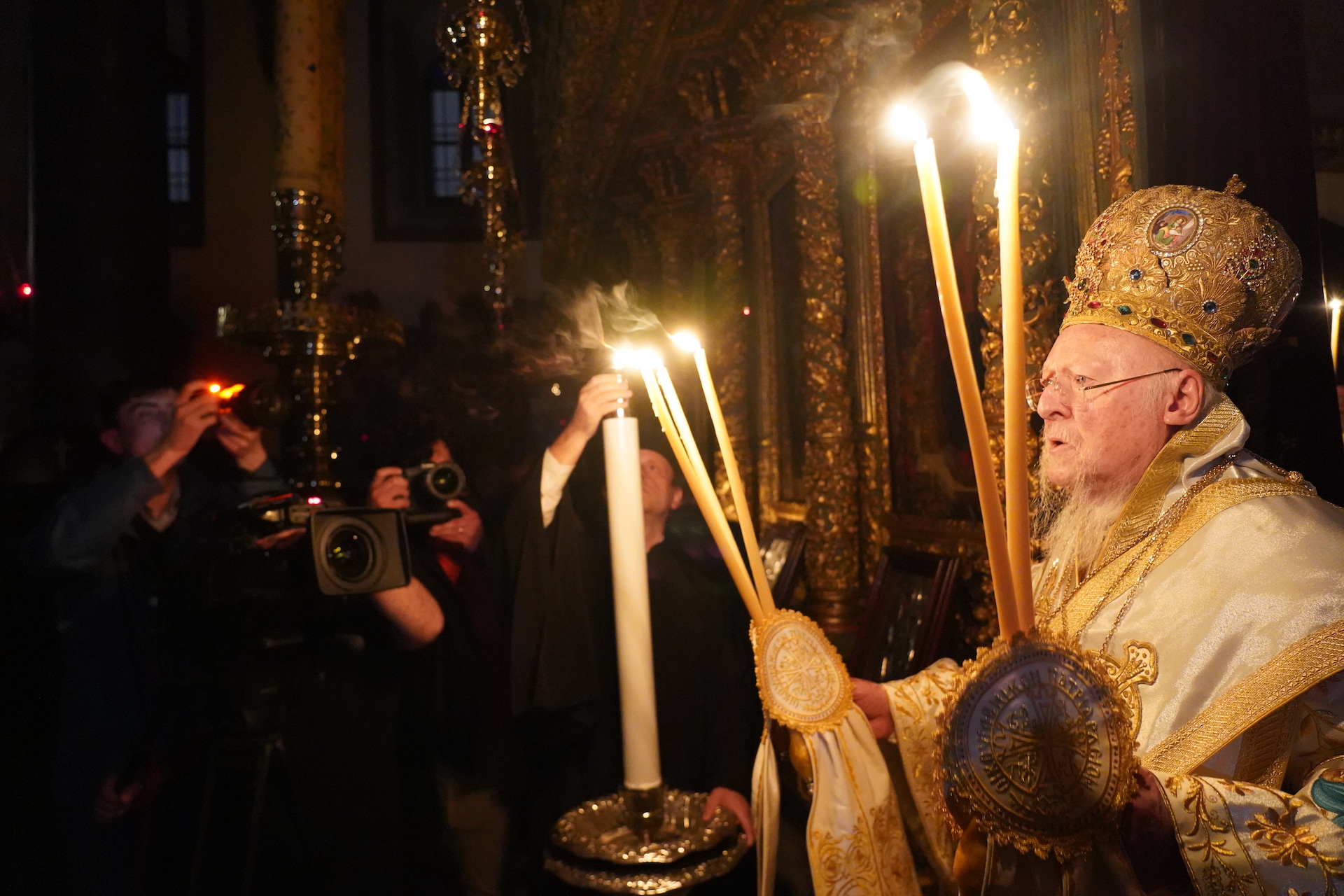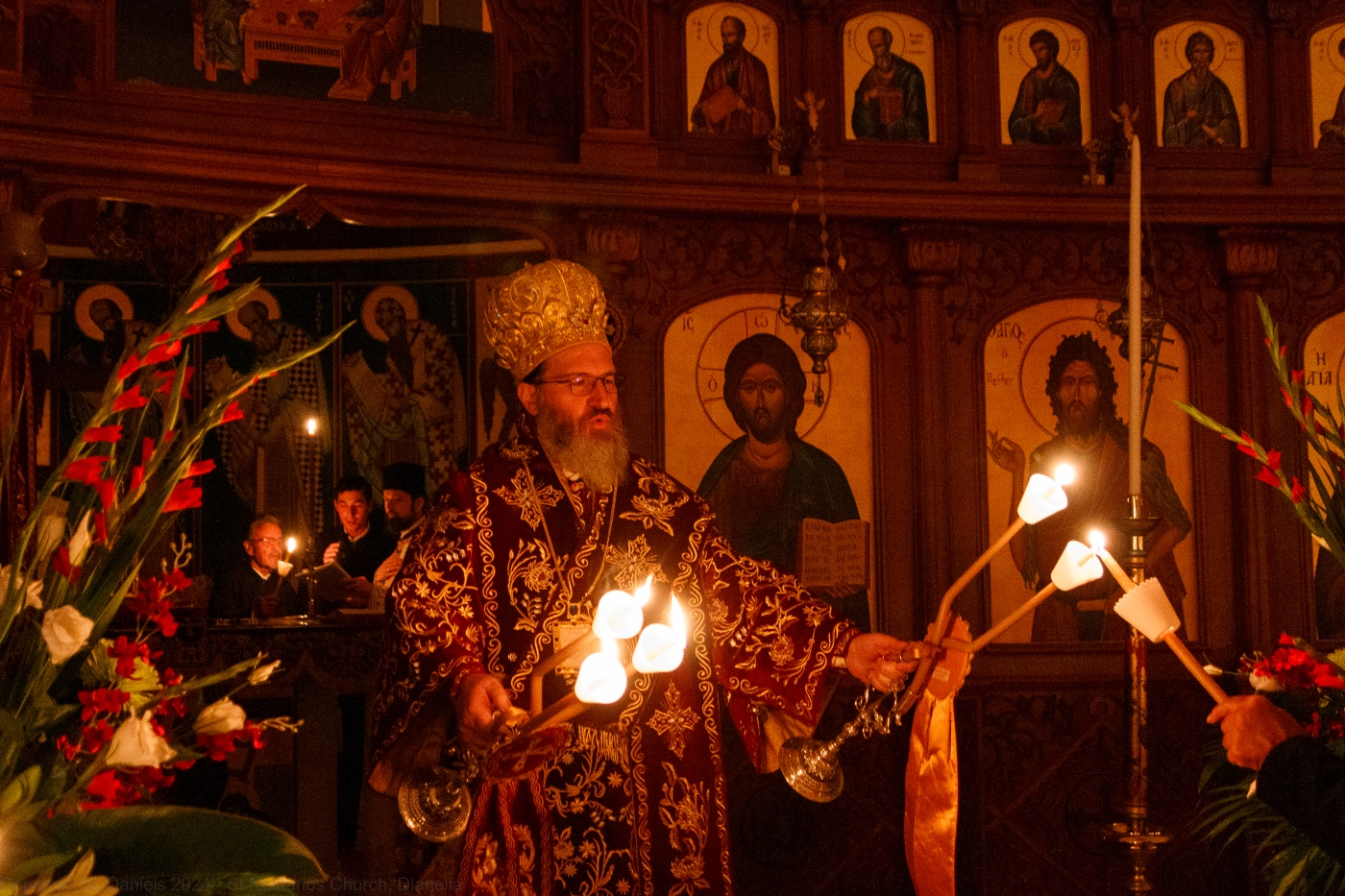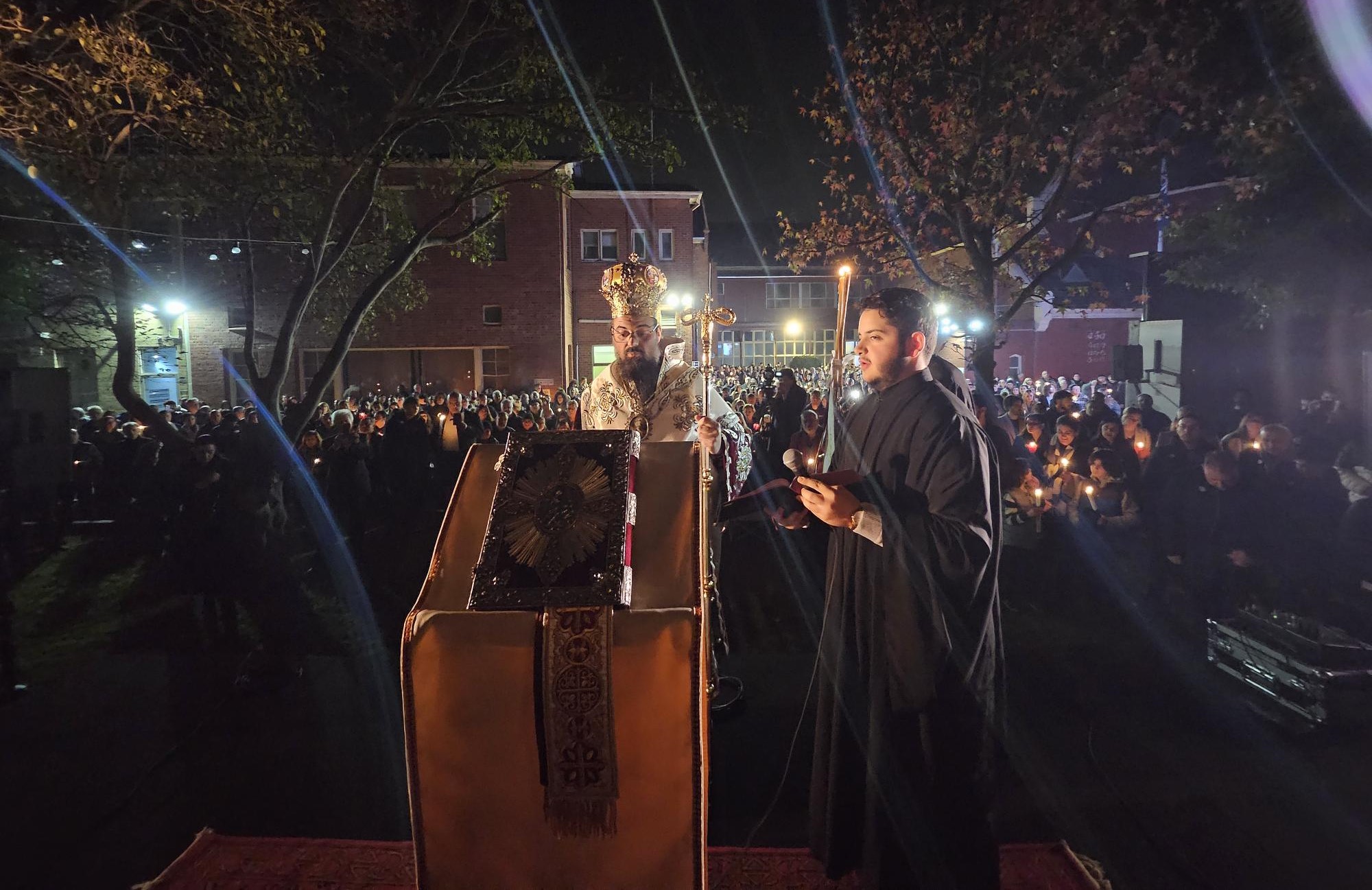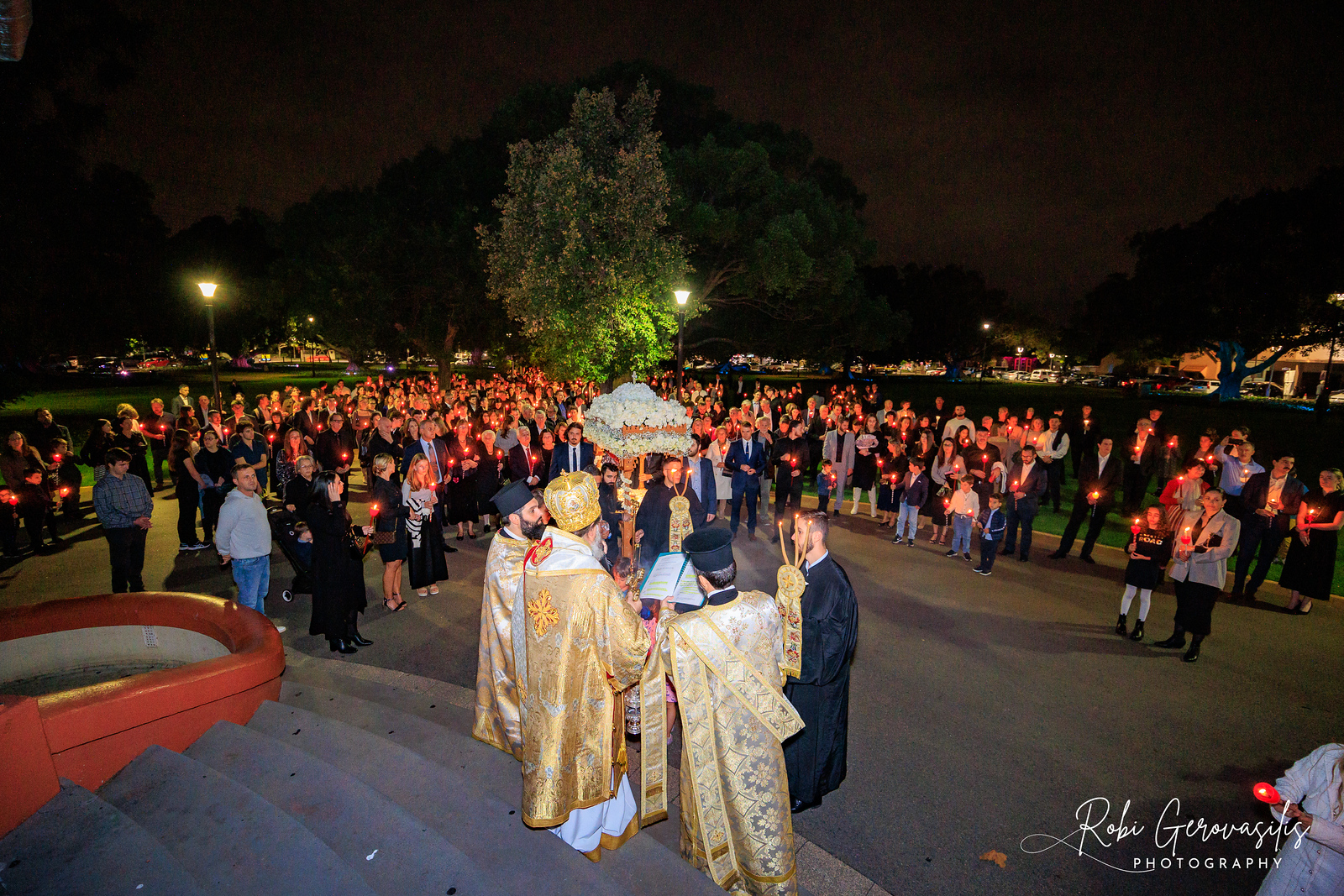Hieromartyr Januarius, Bishop of Benevento, and his companions, at Pozzuoli (21 April)
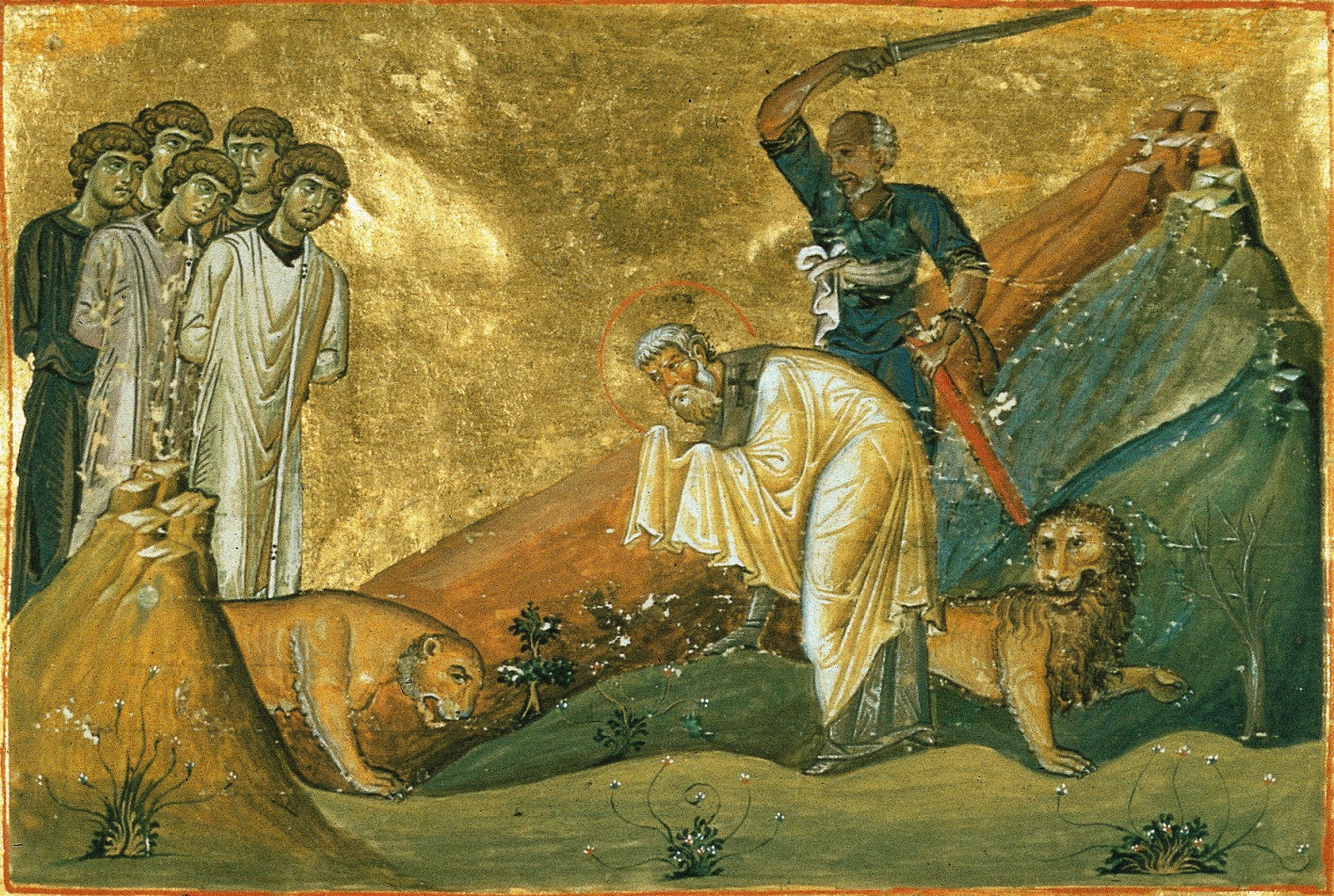

Hieromartyr Januarius Bishop of Benevento, and the deacons Proculus, Sossius and Faustus, Desiderius the Reader, Eutychius and Acution suffered martyrdom for Christ about the year 305 during the persecution ordered by the emperor Diocletian (284-305).
They arrested Saint Januarius and led him to trial before Menignus, the governor of Campagna (central Italy). Because of his firm confession of Christianity, they threw the saint into a red-hot furnace. But like the Babylonian youths, he came out unharmed. Then at Menignus’s command, they stretched him out on a bench and beat him with iron rods until his bones were exposed.
In the crowd were Deacon Faustus and the Reader Desiderius, who wept at the sight of their bishop’s suffering. The pagans surmised that they were Christians, and threw them into prison with the hieromartyr Januarius, in the city of Puteolum. At this prison were two deacons who had been jailed for confessing Christ: Saints Sossius and Proculus, and also two laymen, Saints Eutychius and Acution.
On the following morning they led out all the martyrs into the circus to be torn to pieces by wild beasts, but the beasts would not touch them. Menignus claimed that all the miracles were due to sorcery on the part of the Christians, and immediately he became blinded and cried out for help. The gentle hieromartyr Januarius prayed for his healing, and Menignus recovered his sight. The torturer’s blindness of soul, however, was not healed. He accused the Christians of sorcery, and ordered the martyrs beheaded before the walls of the city (+ 305).
Christians from surrounding cities took up the bodies of the holy martyrs for burial, and those of each city took one, in order to have an intercessor before God. The inhabitants of Neapolis (Naples) took the body of the hieromartyr Januarius. With the body, they also collected his dried blood.
Since the fifteenth century, the blood liquifies when the container is placed near another relic, believed to be the martyr’s head. Many miracles proceeded from the relics of the hieromartyr Januarius. During an eruption of Vesuvius around 431, the inhabitants of the city prayed to Saint Januarius to help them. The lava stopped, and did not reach the city.
These Martyrs contested for piety’s sake in Campania of Italy, during the reign of Diocletian (284-305), when Timothy was Proconsul. Saint Januarius was the Bishop of Benevento in Campania; he was arrested and taken to Nola, where he was cast into a burning furnace, from which he came forth unharmed; at Puteoli, together with Proculus, Sosius, and Faustus the deacons, Desiderius, reader of the Church of Benevento, and Eurychius and Acutius, nobles from Puteoli, he was cast to wild beasts, which as they came near the Saints, fell affectionately at their feet. Finally they were all beheaded, about the year 305.
This saint was the Bishop of Benevento in Italy. At the time of the persecution under Maximian, Januarius was brought before the court and tortured in various ways, which he blamelessly and patiently endured. When they cast him into the fire, the fire was cooled by an invisible dew, and the martyr stood unharmed amidst the flames, singing praises to God. Then they scrapped his body with iron brushes until the bones showed white, which the martyr innocently and patiently endured. His deacon, Festus, and his reader, Desiderius, witnessed the suffering of the martyr and wept for their spiritual father. Then they too were bound and, together with Bishop Januarius, were brought to the city of Pozzuoli [Puteoli, near Naples] and cast into prison. The Pozzuoli deacons Proculus and Sussos and two Christian laymen, Eutychius and Acutius, were in this same prison for the sake of Christ. The next day all seven of them were thrown to wild beasts, but the wild beasts did not touch them. They were all beheaded, and the Christians of the city of Naples secretly carried the body of St. Januarius to their city and buried it honorably in church. To the present day numerous miracles have occurred at the grave of this saint. Among the many miracles one is particularly remembered: A poor widow, whose only son had died, removed the icon of St. Januarius from the church and placed it on the body of her dead son, sobbing and praying to the saint, and her son returned to life. St. Januarius suffered honorably in the year 305 A.D.
Apolytikion of Hieromartyr Januarius
Fourth Tone
As a sharer of the ways and a successor to the throne of the Apostles, O inspired of God, thou foundest discipline to be a means of ascent to divine vision. Wherefore, having rightly divided the word of truth, thou didst also contest for the Faith even unto blood, O Hieromartyr Januarius. Intercede with Christ our God that our souls be saved.
Source: oca.org / goarch.org / westserbdio.org

